Quantitative and Evolutionary Ecology of Communities Group
Members
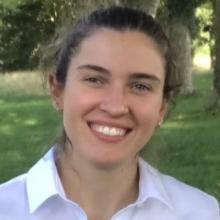
Doctorante
UCBL

Professeure des universités
VetAgro-Sup
Tel: 33 04 72 43 27 56
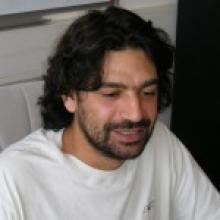
Directeur de recherche
CNRS
Tel: 33 04 72 43 27 57

Doctorant
UCBL
Tel: 04 72 44 81 42

Doctorant
CNRS
Tel: 04 72 44 81 42
Doctorant
VetAgro-Sup
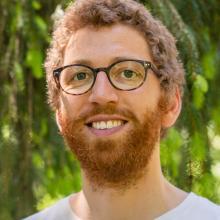
Maître de conférences
UCBL
Tel: 04 72 44 81 42


Professeur des universités
UCBL
Tel: 33 04 72 43 27 56

Professeur des universités
UCBL
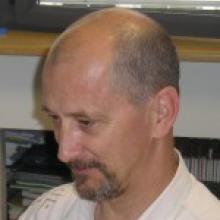
Directeur de recherche
CNRS
Tel: 33 04 72 43 27 56
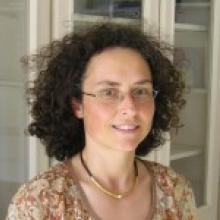
Maîtresse de conférences
UCBL
Tel: 33 04 72 43 29 02
Maître de conférences
UCBL
Tel: 33 04 72 43 29 02
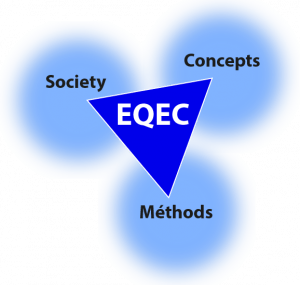
Our research activities, focused on interspecific interactions (community ecology), aim to better understand the ecological and evolutionary processes structuring species assemblages and biodiversity at different temporal and spatial scales. Our team addresses these major issues using contrasting biological models (communities of large African mammals, insects, microbiota, plants) from 3 complementary angles:
- Our work is strongly anchored in the conceptual framework of evolutionary biology by studying (i) the diversity of adaptive responses implemented by organisms to selective pressures in their environment, (ii) their consequences on population demography and ultimately (iii) the dynamics and composition of species communities.
- Our research is closely linked to societal issues of biodiversity conservation and management by integrating both the functioning of socio-ecological systems and the context of climate change. We conduct experimental studies, manage and ensure the long-term monitoring of several community observation networks.
- Methodological issues also occupy a central place in our team, with the development of new tools for statistical processing and modeling of ecological data. This activity leads to the development of methods and software that we develop and distribute freely.
Research programs
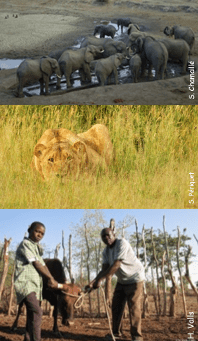
Functioning of African savanna communities
The Hwange LTSER (Long-Term Socio-Ecological Research site in Zimbabwe hosts a long-term interdisciplinary research program that focuses on the functioning of plant and animal communities within the Hwange National Park and the interactions between this protected area and humans living in its periphery. Based on this program, three axes are developed: (1) studying the population dynamics of elephants, exploring their impact and that of management policies on the socio-ecosystem functioning; (2) Understanding the extent to which interactions within and between trophic levels are sensitive to management actions (e.g. sport hunting, water management) and climate change; (3) Decoding human ecology and human-wildlife coexistence mechanisms towards integrated conservation and sustainable functioning of the socio-ecosystem. This research is complemented by more recent works in the Hluhluwe-iMfolozi Park and in the Madikwe reserve in South Africa, which focus on the role of environmental conditions on the hunting success of large African carnivores. We work in close collaboration with the IRL (International Research Lab) Rehabs.
Involved group members : Alice Bernard, Laura Lacomme, Aïssa Morin, Lisa Nicvert, Elie Pedarros, Yolan Richard, Marion Valeix*
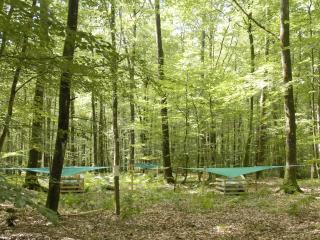
Masting and the community dynamics of seed consumers
Masting is a reproductive strategy often encountered in perennial plants, characterized by fructifications highly fluctuating in time and being synchronized at the population level. The seeds produced that way constitute a pulsed resource with a strong impact on the eco-evolutionary dynamics of seed-consuming communities and forest regeneration. Our lack of knowledge of this system still impedes our understanding of the dynamics of temperate forest ecosystems and its future in the context of climate change. Our work carried out on oak forests aims to better understand (i) the proximal causes of masting, (ii) the mechanisms underlying the coexistence of species competing for such highly fluctuating resource and (iii) the co-evolution of consumer exploitation strategies for the fluctuating resource and forest tree fruiting strategies. On the basis of the results obtained, scenarii will be proposed on the future of forest regeneration under climate change, that may serve forest management.
Involved group members : Marie-Claude Bel-Venner*, Emilie Fleurot, Léa Keurinck, Jean Lobry, Samuel Venner

The spread of antibiotic resistance genes in bacteria
Antibiotic resistance is recognized as one of the greatest current threats to human health, and the mobile genetic elements (MGEs) that circulate in bacterial populations and communities are the main vehicles. To understand the dynamics and diversity of MGEs in bacterial pangenomes and the emergence of antibiotic resistance genes, we propose to go beyond the framework of conventional genomics by considering pangenomes as complex ecological communities. In the Ab-One program, we mobilize the concepts and tools developed in community ecology based on an integrative approach (monitoring of bacterial populations/communities evolving in contrasting environments -One-Health approaches-, pan-genomic analyses, experimentation in molecular and cellular microbiology, mathematical modelling). This program is currently focused on the dynamics of MGEs in Acinetobacter baumannii, an antibiotic-resistant microorganism classified as a priority by the WHO. Other more general approaches will illustrate the relevance of this new conceptual framework to understand the dynamics and diversity of MGEs in bacterial pangenomes. This program, co-piloted by our team and a team from CIRI (Horigene) involves the participation of 9 organizations (6 from Lyon -LBBE, CIRI, MMSB, HCL, LEM, VetAgro Sup-, Institut Pasteur (Paris), LMGM (Toulouse ), Robert Koch Institute (Germany)).
Involved group members : Stéphane Dray, Rémi Tuffet, Samuel Venner*
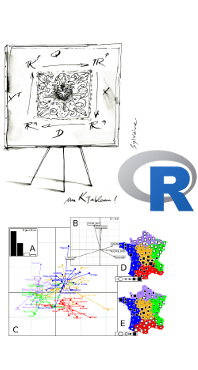
Statistical analysis of ecological data
Understanding the structure and dynamics of species assemblages, and the processes behind them, requires collecting data that are becoming increasingly complex owing to the sophisticated technological developments made available for their acquisition (e.g. GPS, loggers, satellite imagery, molecular data). We are developing new methods for analysing such data, that provide new insights into the ecological processes at work in communities. Multivariate analysis methods allow the analysis of spatial structures, accounting for various information on species (functional traits, morphology, phylogeny), the spatio-temporal variation of species-environment relationships or the multifaceted perception of the protected human-environment relationship. We also model multi-'omics' dose-response data within communities in order to better understand the Adverse Outcome Pathway (AOP) and to better appreciate the risks to the environment. These methodological innovations are made available to the scientific community through the development, distribution and maintenance of software (libraries for the R language: ade4, adegraphics, adephylo, ade4TkGUI, nlstools, fitdistrplus, DRomics, seqinr).
Involved group members: Marie Laure Delignette-Muller, Stéphane Dray*, Jean Lobry, Jean Thioulouse.
Publications
Display of 601 to 630 publications on 656 in total
Approche qualitative et quantitative de l'effet de la jachère sur des populations de champignons mycorhiziens à arbuscules
Le sol, milieu vivant : fonctionnement et gestion .
Conference paper
see the publicationSusceptibility of several sahelian Acacia to Meloidogyne javanica (Treub) Chitw
Agroforestry Systems . 46 : 123-130
Journal article
see the publicationCharacterization of Unexpected Growth of Escherichia coli O157:H7 by Modeling
Applied and Environmental Microbiology . 65 : 5322-5327
Journal article
see the publicationIntra-strand biases in bacteriophage T4 genome
Gene . 238 : 59-64
Journal article
see the publicationPhysical mapping of an origin of bidirectional replication at the centre of the Borrelia burgdorferi linear chromosome
Molecular Microbiology . 32 : 437-445
Journal article
see the publicationEvolution of DNA base composition under no-strand-bias conditions when the substitution rates are not constant
Molecular Biology and Evolution . 16 : 719-723
Journal article
see the publicationAsymmetric substitution patterns: a review of possible underlying mutational or selective mechanisms
Gene . 238 : 65-77
Journal article
see the publicationGene size reduction in the bacterial aphid endosymbiont, Buchnera.
Molecular Biology and Evolution . 16 ( 12 ) : 1820-1822
Journal article
see the publicationRelation between the generation time and the lag time of bacterial growth kinetics
International Journal of Food Microbiology . 43 : 97-104
Journal article
see the publicationIdentification of soil factors that relate to the structure of the plant parasitic nematode community
Applied Soil Ecology . 8 : 35-49
Journal article
see the publicationEcology of larval mosquitoes with special reference to Anopheles arabiensis (Diptera: Culcidae) in market-garden wells in urban Dakar Senegal
Journal of Medical Entomology . 35 : 948-955
Journal article
see the publicationADE-4 Software: a tool for multivariate analysis and graphical display
Océanis : Série de documents océanographiques . 24 ( 4 ) : 393-416
Book chapter
see the publicationInfluence of genomic G+C content on average amino-acid composition of proteins from 59 bacterial species
Gene . 205 : 309-316
Journal article
see the publicationRelationships between genomic G+C content RNA secondary structures and optimal growth temperature in prokaryotes
Journal of Molecular Evolution . 44 : 632-636
Journal article
see the publicationFunctional data analysis of curve asymmetry with application to the color pattern of Hydropsyche contubernalis head capsule
Biometrics . 53 : 294-305
Journal article
see the publicationADE-4: a multivariate analysis and graphical display software
Statistics and Computing . 7 : 75-83
Journal article
see the publicationNetMul a World-Wide Web user interface for multivariate analysis sofware
Computational Statistics and Data Analysis . 21 : 369-372
Journal article
see the publicationApplication of a modified disc diffusion technique to antimicrobial susceptibility testing of Vibrio anguillarum and Aeromonas salmonicida clinical isolates
Veterinary Microbiology . 51 : 137-149
Journal article
see the publicationOrigin of replication of Mycoplasma genitalium
Science . 272 : 745-746
Journal article
see the publicationAsymmetric substitution patterns in the two DNA strands of bacteria
Molecular Biology and Evolution . 13 : 660-665
Journal article
see the publicationOn-line tools for sequence retrieval and multivariate statistics in molecular biology
Computer Applications in the Biosciences . 12 : 63-69
Journal article
see the publicationCorrespondence discriminant analysis: a multivariate method for comparing classes of protein and nucleic acid sequences
Computer Applications in the Biosciences . 12 : 519-524
Journal article
see the publicationA simple vectorial representation of DNA sequences for the detection of replication origins in bacteria
Biochimie . 78 : 323-326
Journal article
see the publicationTowards Better Graphics for Multivariate Analysis: the Interactive Factor Map
Computational Statistics and Data Analysis . 11 : 11-21
Journal article
see the publicationCo-inertia analysis of amino-acid physico-chemical properties and protein composition with the ADE package
Bioinformatics . 11 : 321-329
Journal article
see the publicationProperties of a general model of DNA evolution under no-strand-bias conditions
Journal of Molecular Evolution . 40 : 326-330
Journal article
see the publicationConvenient Model To Describe the Combined Effects of Temperature and pH on Microbial Growth
Applied and Environmental Microbiology . 61 : 610-616
Journal article
see the publicationDE software: multivariate analysis and graphical display of environmental data
incollection . -- : 57-62
Journal article
see the publicationMultivariate analysis of spatial patterns: a unified approach to local and global structures
Environmental and Ecological Statistics . 2 : 1-14
Journal article
see the publication
You also, comment on this article